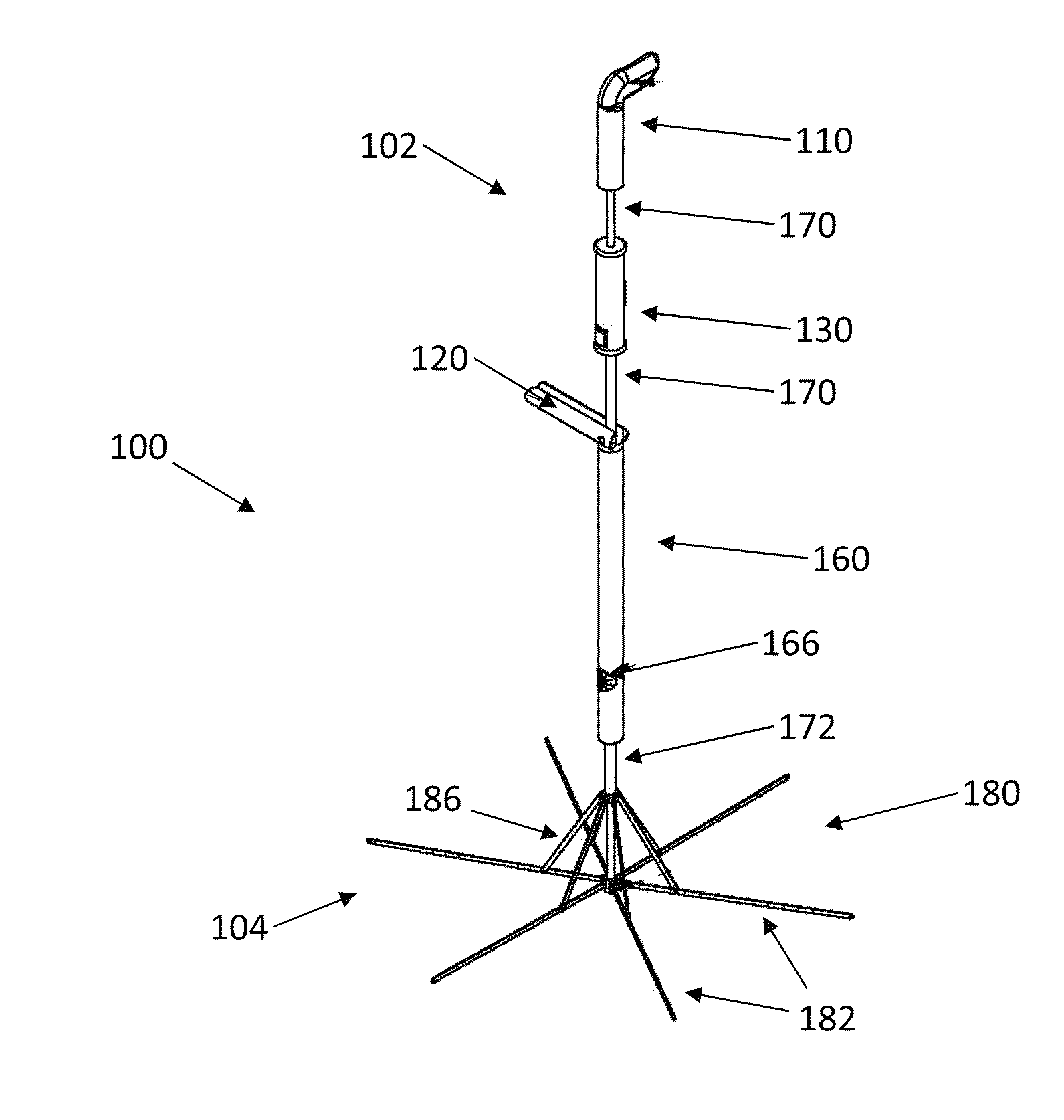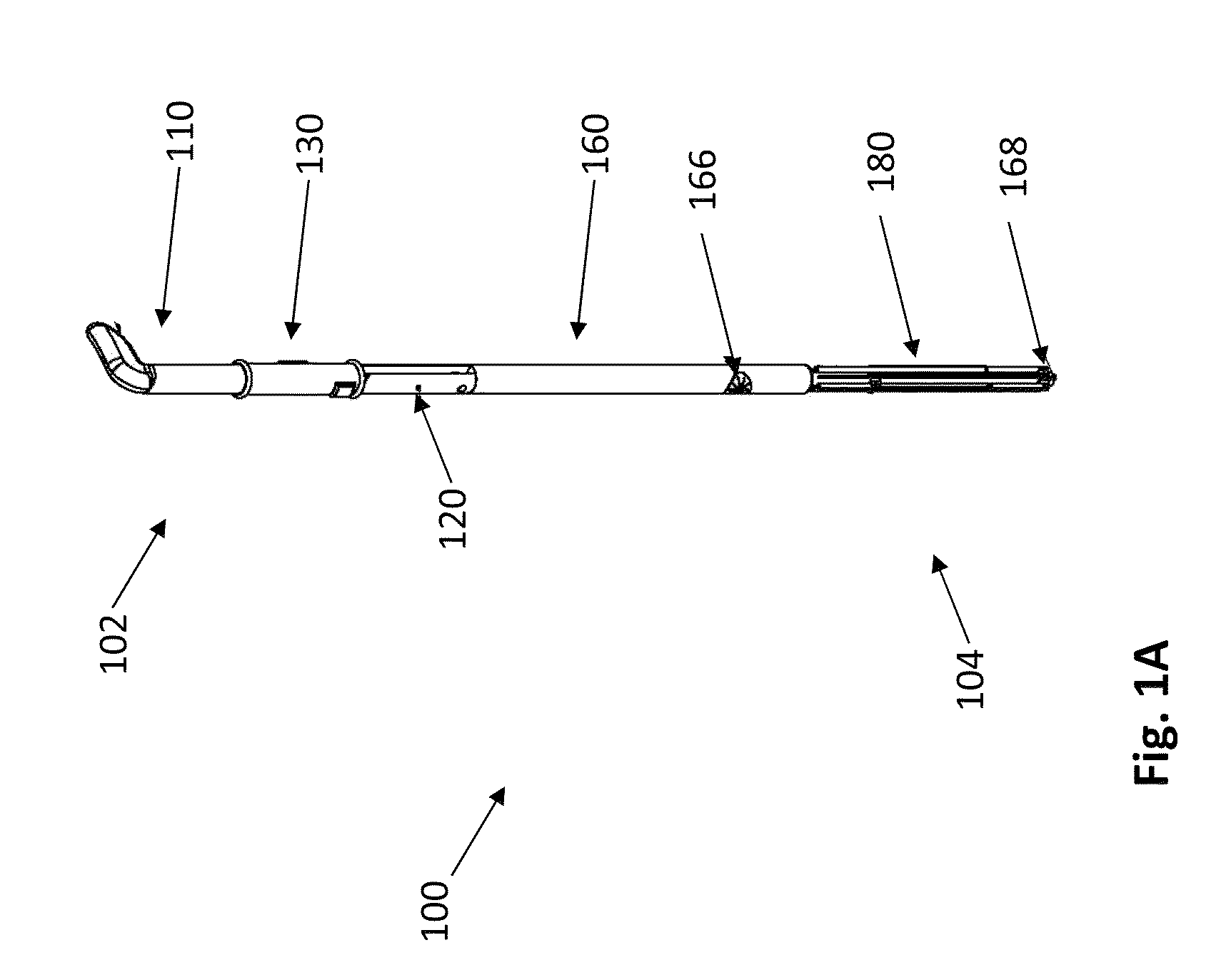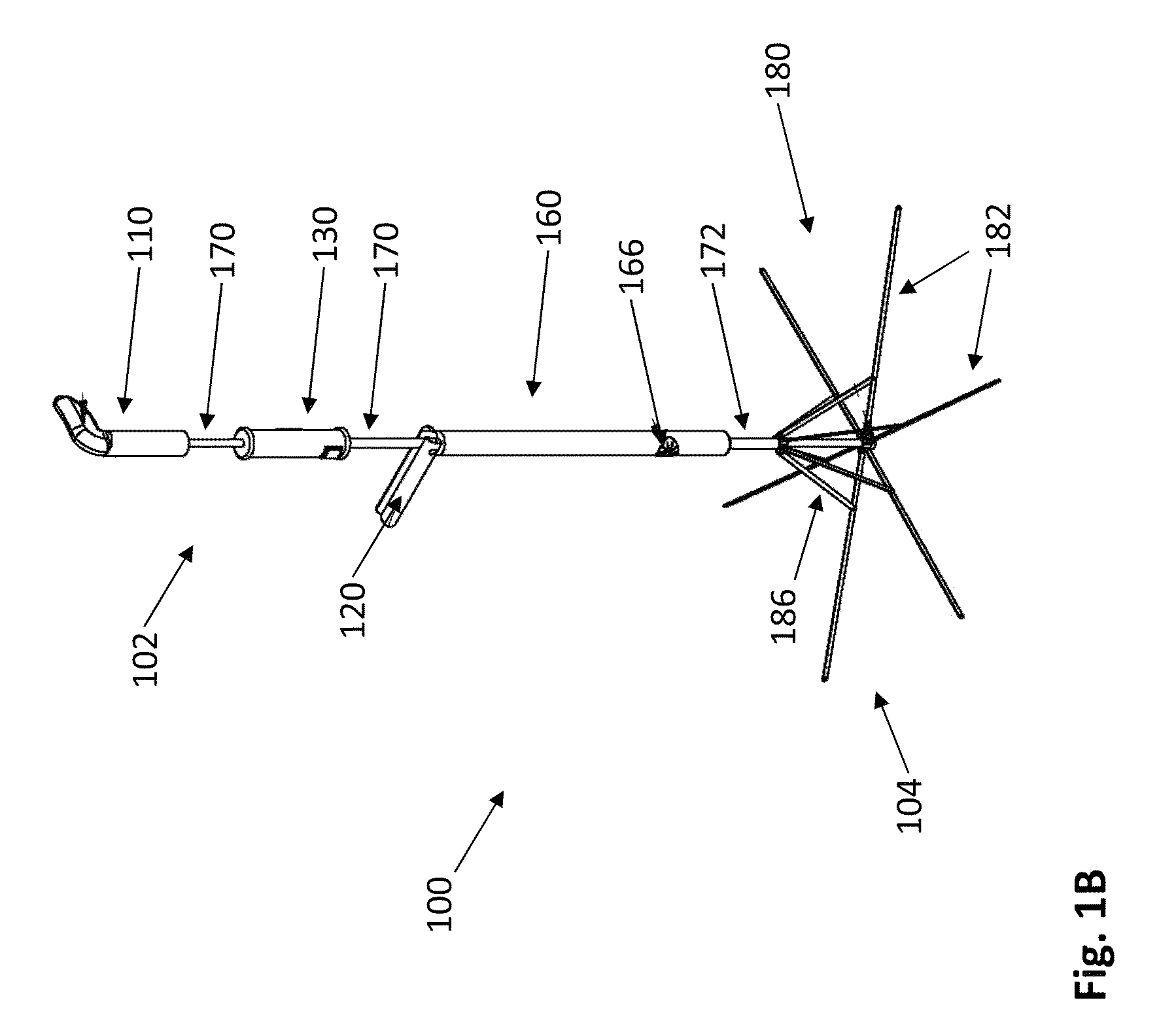Animal defense system and method of use
a technology for animal defense and animal body, applied in the field of animal defense system, can solve the problems of limiting the use of animals, increasing the frequency and severity of problems, and injuring or killing humans, so as to reduce the threat of animals to users, increase effectiveness and reliability, and protect animals.
- Summary
- Abstract
- Description
- Claims
- Application Information
AI Technical Summary
Benefits of technology
Problems solved by technology
Method used
Image
Examples
Embodiment Construction
[0084]The present invention relates to an animal defense system with one or more deterrent elements and to an apparatus and method for safely deterring an animal which threatens a user. Further, the apparatus may be configured to operate in a variety of user-selected modes that increase the effectiveness and reliability in deterring an animal which threatens a user. In one embodiment of the invention, the apparatus is configured to operate in a variety of user-selected modes that increase the effectiveness and reliability in deterring an animal which threatens a user. When one or more deterrent elements of the device are deployed or activated, an animal threat to a user is mitigated if not eliminated. The device includes a deterrent structure that is deployable and controllable by a user, for example through a control button on a handle of the device. The deterrent structure includes deterrent structure arms and deterrent structure linkages. Other deterrents comprise electrical, vib...
PUM
 Login to View More
Login to View More Abstract
Description
Claims
Application Information
 Login to View More
Login to View More - R&D
- Intellectual Property
- Life Sciences
- Materials
- Tech Scout
- Unparalleled Data Quality
- Higher Quality Content
- 60% Fewer Hallucinations
Browse by: Latest US Patents, China's latest patents, Technical Efficacy Thesaurus, Application Domain, Technology Topic, Popular Technical Reports.
© 2025 PatSnap. All rights reserved.Legal|Privacy policy|Modern Slavery Act Transparency Statement|Sitemap|About US| Contact US: help@patsnap.com



